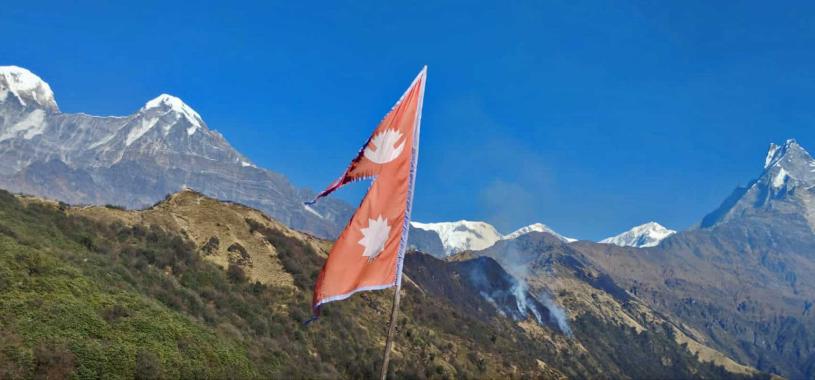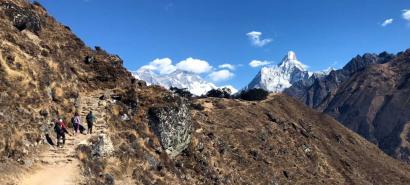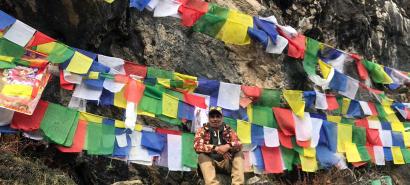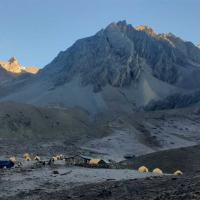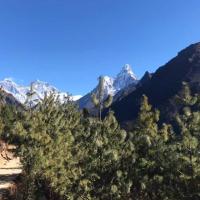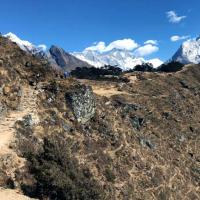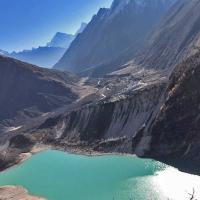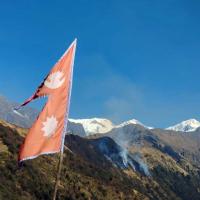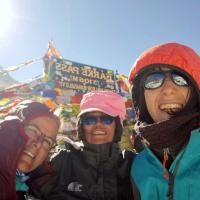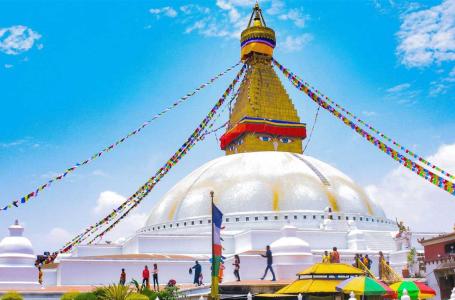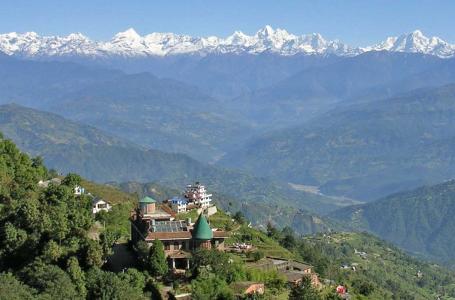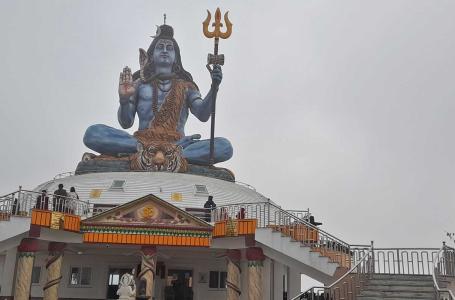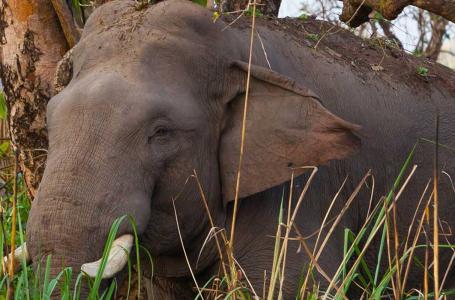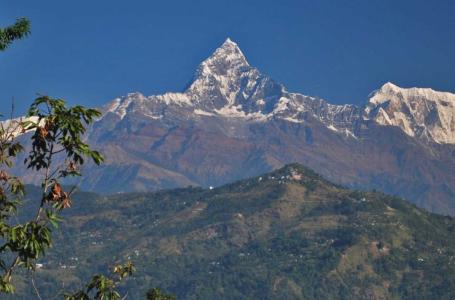- 02Pax USD 1400 pp
- 03 to 05 Pax USD 1260 pp
- 06 to 10 Pax USD 1150 pp
Itinerary
Your journey begins early in the morning with a long yet scenic drive from Kathmandu to Machha Khola. The road follows the Prithivi Highway alongside the Trishuli River, passing through green hills, traditional villages, and terraced farmlands.
After reaching Arughat, the road becomes rougher as it winds along the Budhi Gandaki River. You’ll continue to Machha Khola, meaning “Fish River,” where the trekking adventure officially starts. The village sits beside the river and offers a peaceful first night surrounded by the sounds of nature.
The trek begins as you walk through Khorlabesi and Tatopani, a small settlement famous for its natural hot springs. The trail climbs gradually through forests and across suspension bridges, passing through Dobhan and Yaru villages.
As you ascend toward Jagat, the valley narrows, and you’ll start to notice the influence of Gurung culture. Jagat, built on a stone terrace, marks the official entry point into the Manaslu Conservation Area and offers stunning views of the surrounding hills.
Leaving Jagat, the trail continues along terraced fields and dense forests. After crossing the Budhi Gandaki several times, you’ll reach Philim, a picturesque Gurung village known for its prayer walls and fluttering flags.
From here, the path diverts from the main Manaslu Circuit and climbs toward Lokpa, the first village in the sacred Tsum Valley region. Lokpa sits in a tranquil forest clearing, offering your first glimpse of the valley’s serene isolation and views of Shringi Himal in the distance.
Today you’ll officially enter the Tsum Valley, often called the “Hidden Valley of Happiness.” The trail descends through thick forest, crossing several small streams before climbing again toward Chumling.
The path is decorated with mani walls and chortens, and the air feels increasingly spiritual. Chumling is a charming village of traditional stone houses and friendly locals dressed in Tibetan attire. You’ll have beautiful views of Ganesh Himal, especially during the evening sunset.
The day begins with a steady climb through cultivated fields and small hamlets. You’ll cross the Shiar Khola on a suspension bridge and ascend gradually through Rainjam and Serpu Khola villages.
The landscape opens as you enter Upper Tsum Valley, where the mountains appear closer and the terrain flattens into wide pastures. The village of Chhekampar, also known as Upper Tsum, welcomes you with spectacular views of Himalchuli and Ganesh Himal, along with the peaceful rhythm of rural life.
Leaving Chhekampar, the trail winds through several spiritual sites, including Lamagaon and Rachen Gompa, one of the most important nunneries in the region. The route continues past Phurbe and Pangdun, following the Shiar Khola River upstream.
The journey offers an intimate look at the daily life of Tsumba people, whose culture is deeply influenced by Tibetan Buddhism. You’ll reach Nile, the last permanent settlement before Mu Gompa, surrounded by barley fields and stone houses.
A shorter but steeper climb leads you to Mu Gompa, the spiritual heart of the Tsum Valley and the highest point of the trek. This centuries-old monastery sits high above the valley, overlooking breathtaking Himalayan peaks, including Ganesh Himal, Boudha Himal, and Churke Himal.
As you approach, the fluttering prayer flags and chanting of monks create a peaceful and spiritual ambience. Spending the night near Mu Gompa gives you a sense of the deep tranquillity that defines this hidden valley.
You’ll spend a full day exploring Mu Gompa to acclimatize and experience the local culture. A short hike to Dephyudonma Gompa, one of the oldest monasteries in the valley, offers stunning views of the Tibetan borderlands.
You can visit meditation caves, observe monastic rituals, and immerse yourself in the serene lifestyle of the monks. This rest day allows both physical recovery and spiritual reflection amidst the Himalayas.
After breakfast, you’ll retrace your steps down the valley toward Rachen Gompa. Founded in the early 20th century, this large nunnery houses over 80 nuns and features intricate murals depicting Buddhist deities and mandalas.
The descent offers wide views of the valley, with colourful chortens and mani walls lining the trail. Spending a night near Rachen Gompa provides an authentic insight into Tsum Valley’s living spiritual traditions.
The return journey continues through Chhekampar and Rainjam, where you can once again enjoy panoramic views of Ganesh Himal. Descending into the lower valley, you’ll pass through small farms and forests before reaching Chumling.
The warm hospitality of the villagers and the familiar landscape make this day both comforting and rewarding after days spent in higher altitudes.
The trail descends gently through forests of pine and rhododendron, following the Shiar Khola and eventually reconnecting with the lower Tsum Valley route.
You’ll pass prayer wheels, small chortens, and terraced fields before arriving in Lokpa, where you first entered the valley. It’s a peaceful and reflective day as you gradually leave the sacred Tsum landscapes behind.
Retracing your path toward the Budhi Gandaki River, you’ll trek through Philim and several smaller villages. The air grows warmer and the landscape greener as you descend.
The sound of the river grows stronger as you approach Jagat, where you’ll spend the evening relaxing and enjoying the comfortable lowland climate after several days in the high Himalayas.
You’ll continue following the Budhi Gandaki downstream, passing Dobhan, Tatopani, and Khorlabesi. Many trekkers stop again at the hot springs in Tatopani to soak their tired muscles.
The trail gradually descends toward Machha Khola, where you’ll spend your final trekking night. The return feels rewarding as you look back on the distance covered and the experiences gained in the Tsum Valley.
After breakfast, you’ll take the scenic drive back to Kathmandu, following the same winding route along the Budhi Gandaki and Trishuli rivers.
The long journey offers plenty of time to relax and reflect on your incredible trek through the hidden valley of Tsum. By evening, you’ll reach the city and return to the comforts of your hotel.
Today is your final day in Nepal. Depending on your flight schedule, you’ll be transferred to Tribhuvan International Airport for your onward journey.
If you have time before departure, you can explore the vibrant streets of Thamel or shop for souvenirs. As you say goodbye, you’ll carry unforgettable memories of the Tsum Valley Trek — a journey filled with cultural discovery, spiritual serenity, and breathtaking Himalayan beauty.
Overview
Tsum Valley Trek – A Hidden Himalayan Treasure in the Manaslu Region
Nestled in the remote northern part of Nepal, the Tsum Valley Trek offers one of the most authentic Himalayan experiences in the country. Known as the “Hidden Valley of Happiness”, Tsum Valley is a sacred Himalayan pilgrimage valley that was opened to trekkers only in 2008. It lies in the northern part of the Manaslu region, close to the Tibetan border, offering a blend of pristine landscapes, ancient Buddhist culture, and traditional villages untouched by modern civilization.
If you’re searching for an off-the-beaten-path adventure in Nepal, the Tsum Valley Trek is the perfect choice. With dramatic mountain views, serene monasteries, and deep-rooted Tibetan traditions, this trek provides a spiritual and cultural journey unlike any other in the Himalayas.
Where Is Tsum Valley Located
Tsum Valley is situated in the Gorkha District of northern Nepal, within the restricted area of the Manaslu Conservation Area. The valley shares its border with Tibet, and due to its isolation, it has preserved its ancient Buddhist traditions, dialects, and art. The area’s name “Tsum” comes from the Tibetan word “Tsombo”, meaning “vivid.” True to its name, Tsum Valley radiates colourful culture, serene landscapes, and spiritual energy.
Tsum Valley Trek Itinerary Overview
The trek typically begins from Soti Khola or Machha Khola, after a scenic drive from Kathmandu. The journey follows the Budhi Gandaki River valley, passing through lush forests, terraced fields, and ethnic Gurung and Magar villages before reaching the secluded Tsum region.
A common Tsum Valley Trek itinerary (16–18 days) includes:
Day 1: Drive from Kathmandu to Soti Khola (710m)
Day 2–3: Trek to Machha Khola and Jagat
Day 4: Reach Lokpa – gateway to Tsum Valley
Day 5–7: Trek through Chumling, Chhekampar, and Nile
Day 8: Visit Mu Gompa (3,700m) – the highest point of the trek
Day 9–10: Return via Rachen Gompa and Chumling
Day 11–13: Retrace steps to Jagat and Soti Khola
Day 14–15: Drive back to Kathmandu
This route can be customised based on fitness level, interest, and time. Many trekkers also combine Tsum Valley with the Manaslu Circuit Trek for a 3-week expedition.
Cultural Experience and Attractions
The Tsum Valley Trek is more than just mountain views — it’s a cultural and spiritual journey. The valley has a strong Tibetan Buddhist influence, evident in every village and monastery. You’ll pass ancient Gompas such as Rachen, Mu, and Dephyudonma, where monks and nuns dedicate their lives to meditation and learning.
Local people follow centuries-old traditions and live a lifestyle that feels frozen in time. The homes are made of stone and wood, and the locals wear traditional Tibetan dress. Festivals like Losar (Tibetan New Year) are celebrated with colourful dances, music, and rituals.
Trekkers often describe Tsum Valley as a place where spirituality meets nature — a living museum of Himalayan Buddhist culture.
Tsum Valley Trek Difficulty and Fitness Level
The Tsum Valley Trek is considered moderately challenging. Daily trekking ranges from 5 to 7 hours, covering rugged trails, suspension bridges, and gradual ascents. No technical climbing is required, but good physical fitness and stamina are essential.
The highest point, Mu Gompa (3,700m), poses mild altitude challenges, so proper acclimatization is important. Prior trekking experience in Nepal or the Himalayas can be helpful, but is not mandatory with good preparation.
Best Time to Visit Tsum Valley
The best time for the Tsum Valley Trek is during spring (March–May) and autumn (September–November). These seasons offer clear skies, comfortable temperatures, and lush scenery.
- Spring: Rhododendrons bloom across the hills, and views of Ganesh Himal are stunning.
- Autumn: Post-monsoon clarity provides the best mountain visibility.
- Winter treks are possible but can be extremely cold at higher elevations.
- Monsoon season (June–August) is not ideal due to heavy rain and leeches on the trail.
Permits and Entry Requirements
Since the Tsum Valley is a restricted area in Nepal, trekkers need special permits. You must trek with a registered guide and a minimum of two people in the group. The required permits include:
- Tsum Valley Restricted Area Permit
- Manaslu Conservation Area Permit (MCAP)
- Annapurna Conservation Area Permit (ACAP) if extending to Manaslu Circuit
Trek Mania Nepal will handle all permit arrangements before the journey begins.
Accommodation and Food
Teahouses and lodges along the Tsum Valley trail provide basic but comfortable accommodation. Expect simple rooms with shared bathrooms and limited electricity. The meals mainly consist of Dal Bhat (rice and lentils), Tibetan bread, noodles, and seasonal vegetables.
Although facilities are more basic compared to popular routes like the Annapurna or Everest treks, the hospitality and authenticity of the Tsum Valley make up for it.
Tsum Valley Trek Cost
The cost of the Tsum Valley Trek varies depending on group size, itinerary, and service type. On average:
Standard 16–18-day trek: USD 1,400 – 1,900 per person
Includes: permits, transportation, guide, porter, accommodation, and meals
Custom packages, private treks, or Manaslu Circuit extensions will affect the total cost.
Why Choose the Tsum Valley Trek?
The Tsum Valley Trek remains one of the most peaceful and culturally rich trekking routes in Nepal. Unlike commercial trails, it offers an intimate connection with local people and nature. Whether you’re seeking a meditative journey or a chance to explore untouched Himalayan beauty, Tsum Valley delivers both serenity and adventure.
If you want to experience authentic Himalayan culture, away from crowded trails, the Tsum Valley Trek should be on your bucket list.
Plan Your Tsum Valley Trek Today
Discover the untouched beauty of the Himalayas in one of Nepal’s most sacred valleys. Whether you’re a seasoned trekker or a curious traveler seeking cultural depth, the Tsum Valley Trek offers a transformative journey through peace, prayer flags, and pristine mountain landscapes.
Book your Tsum Valley Trek now and experience the hidden jewel of the Manaslu region.
Highlights
- Explore one of Nepal’s most remote and sacred Himalayan valleys
- Witness centuries-old Buddhist monasteries, chortens, and mani walls
- Experience authentic Tibetan-influenced culture and hospitality
- Breathtaking views of Ganesh Himal, Sringi Himal, and Buddha Himal
- Walk through ancient villages like Chhekampar, Nile, and Mu Gompa
- Optional combination with the Manaslu Circuit Trek for a longer adventure
Cost Details
- Airport pickup and drop service
- Accommodation in Kathmandu (Hotel Chhimeki 1 nights)
- All food during the trek (B, L, D included)
- Accommodation during the trek
- Transportation, drive from Kathmandu to the Trekking starting Point by jeep and Ending Point by jeep/car.
- Government licence holder, English-speaking trekking guide.and His salary, lodging, food, and insurance
- Trekking permits: Tsum valley Special Permit.
- Manaslu & Annapurna Conservation Permit.
- All required trekking gear, like sleeping bags and down jackets made available for rent.
- Porter (1 porter for 2 trekkers with a max load of 17 to 20kg). for a carry bag.
- First aid medical box.
- T-shirt, Duffel Bag, and Trekking Map with company logo
- Rescue Management Service
- All Tax (10% service charge + 13% VAT)
- Farewell Dinner
- All kinds of Drinks
- Visa fee to enter Nepal
- International flight tickets
- Extra night accommodation and meal costs in Kathmandu due to any change in the scheduled itinerary.
- Travel insurance/ Rescue operation costs
- All personal expenses
- Tip for guide and porters
Dates & Pricing
Trip Start and End Point
Kathmandu / Kathmandu
| DATES | STATUS | PRICE | SPACE LEFT | ||||
|---|---|---|---|---|---|---|---|
|
Start date: 15-Mar, 2026
End date: 29-Mar, 2026 |
Guaranteed | USD 1440 |
2
|
Book Now | |||
|
Start date: 05-Apr, 2026
End date: 19-Apr, 2026 |
Guaranteed | USD 1440 |
3
|
Book Now | |||
|
Start date: 15-May, 2026
End date: 29-May, 2026 |
Guaranteed | USD 1440 |
4
|
Book Now | |||
|
Start date: 10-Jun, 2026
End date: 24-Jun, 2026 |
Guaranteed | USD 1440 |
2
|
Book Now | |||
|
Start date: 25-Oct, 2026
End date: 08-Nov, 2026 |
Guaranteed | USD 1440 |
1
|
Book Now | |||
Equipment List
- Woolen shirts and thick sweaters.
- Jackets (Fiber or down).
- Waterproof jacket with hood or poncho.
- Tracksuit, Track shoes, and Trousers.
- Thermal Underwear and Thermal coat.
- 2 pairs of loose-fitting long shorts/ skirts.
- Pair of Gloves and sandals.
- Woolen hat and long-sleeved shirt.
- Lightweight walking boots.
- 2 pairs of thin socks and 2 pairs of woolen socks.
- Snow glasses and sunglasses.
- Trekking Sticks and a Duffel bag or kit bag to carry to gear while trekking.
- Some (small/large) plastic bags to separate clean clothes from dirty ones, and some smaller plastic bags to dispose of garbage.
- Daypack bag to carry your personal requirements.
- Water Bottle, water purifying tablets.
- Towels, Umbrella (optional).
- Head lamp, Binocular, Camera, trekking map and compass, reading materials, pencil, rubber, pen, notebook, and moisturizer for lip, face body
FAQs
The Tsum Valley Trek lies in the remote northern part of the Manaslu region of Nepal, near the Tibetan border. It is a restricted trekking area that was opened to foreigners only in 2008, preserving its ancient Buddhist culture, sacred monasteries, and pristine mountain landscapes.
The Tsum Valley Trek is considered a moderate to challenging trek. The trail involves several days of continuous walking on uneven terrain with gradual ascents and descents. Although no technical climbing is required, good physical fitness and stamina are essential due to long walking hours and altitudes reaching up to 3,700 meters at Mu Gompa.
The best time for the Tsum Valley Trek is spring (March to May) and autumn (September to November). During these seasons, the weather is stable, skies are clear, and mountain views are at their best. The spring season offers blooming rhododendrons, while autumn provides crystal-clear visibility and pleasant temperatures.
Yes, trekkers need special permits since Tsum Valley is a restricted area. You’ll need the Tsum Valley Restricted Area Permit, the Manaslu Conservation Area Permit (MCAP), and the Annapurna Conservation Area Permit (ACAP). Additionally, at least two trekkers accompanied by a registered guide are required to obtain the restricted permit.
The standard Tsum Valley Trek itinerary takes around 15 days, including travel days from and to Kathmandu. However, it can be customized to shorter or longer versions depending on your pace, acclimatization needs, or if you combine it with the Manaslu Circuit Trek.
The highest point on the Tsum Valley Trek is Mu Gompa, located at about 3,700 meters (12,139 feet). Though the elevation is not extremely high compared to other treks in Nepal, proper acclimatization and hydration are still important to prevent altitude sickness.
Accommodation along the Tsum Valley route consists mainly of local teahouses and guesthouses. These provide basic but comfortable rooms with twin beds, blankets, and shared bathrooms. Meals are typically home-cooked, offering Nepali dishes like dal bhat, noodles, soups, and Tibetan bread.
Yes, many trekkers choose to combine the Tsum Valley Trek with the Manaslu Circuit Trek for a longer and more adventurous experience. The combined trek usually takes around 22–24 days and includes both the sacred Tsum Valley and the high mountain pass of Larkya La (5,160m).
Before attempting the Tsum Valley Trek, it’s recommended to do regular cardio exercises like hiking, jogging, cycling, or swimming for at least a month. Strength and endurance training help you walk long hours each day with a light backpack. Mental preparedness for remote conditions is also important.
The trek offers stunning Himalayan views of Ganesh Himal, Shringi Himal, and Himalchuli, as well as ancient monasteries like Mu Gompa and Rachen Gompa. Trekkers experience traditional Tibetan-influenced villages, sacred mani walls, prayer flags, and an authentic glimpse into the unique Buddhist culture of the Tsumba people.
Yes, beginners with a good level of physical fitness can complete the trek if they prepare properly. It’s not a technical trek, but the daily walking duration of 6–7 hours and remote conditions may be challenging. Hiring a professional guide and taking acclimatization days will make the journey smoother and safer.
Mobile coverage is available in lower sections like Machha Khola, Jagat, and Philim but becomes limited or nonexistent in upper villages such as Chhekampar and Mu Gompa. Some teahouses offer Wi-Fi for a small fee, but it can be slow and unreliable. It’s best to inform family or friends before heading into the valley.
Pack essentials like trekking boots, warm layers, a down jacket, rain gear, quick-dry clothing, a sleeping bag, water purification tablets, and a first-aid kit. Don’t forget headlamps, trekking poles, sunscreen, and extra batteries, as power sources are limited in the upper valley.
Yes, the Tsum Valley is deeply spiritual, so respecting local customs is important. Always walk clockwise around mani walls and stupas, avoid touching religious artefacts, and dress modestly in monasteries. Taking permission before photographing people or sacred sites is also appreciated by locals.
The Tsum Valley Trek offers a rare combination of cultural depth, scenic beauty, and peaceful isolation. Unlike busier routes such as Everest or Annapurna, Tsum Valley remains largely untouched, giving trekkers a genuine connection with Tibetan Buddhist traditions and Himalayan wilderness. It’s ideal for those seeking a more spiritual and less commercialized trekking experience in Nepal.


